Comprehensive repair manuals for 1980s Yamaha Sun Classic Golf Carts provide detailed instructions and diagrams for various repair procedures. These manuals are essential for maintaining and restoring vintage models efficiently.

Overview of the Yamaha Sun Classic Golf Cart
The Yamaha Sun Classic Golf Cart, popular in the 1980s, is a highly sought-after model among vintage golf cart enthusiasts. Known for its durability and reliability, it was designed to provide smooth performance on golf courses and recreational settings. The cart features a simple yet robust design, making it accessible for both casual users and avid collectors. Its compact size and efficient gas-powered engine contributed to its widespread use during the era. Over time, these carts have become iconic, with many owners restoring and maintaining them to preserve their classic appeal. The availability of repair manuals has been crucial in helping owners and enthusiasts keep these carts in optimal condition, ensuring their longevity for future generations to enjoy. These manuals serve as invaluable resources for understanding and maintaining the unique characteristics of the Yamaha Sun Classic.
Importance of Repair Manuals for Vintage Golf Carts
Repair manuals are indispensable for maintaining and restoring vintage golf carts like the 1980s Yamaha Sun Classic. These guides provide detailed instructions, diagrams, and specifications essential for diagnosing and addressing issues. They empower owners to perform routine maintenance, such as oil changes and battery checks, and tackle complex repairs, like engine overhauls or electrical system troubleshooting. Without these manuals, identifying and resolving problems becomes challenging, potentially leading to further damage or safety hazards. Additionally, repair manuals help preserve the cart’s original performance and aesthetics, which is crucial for collectors seeking to maintain authenticity. By following the manual’s guidelines, owners can extend the cart’s lifespan and ensure it remains functional and enjoyable for years to come. Thus, repair manuals are vital tools for both practical maintenance and the preservation of vintage golf carts.
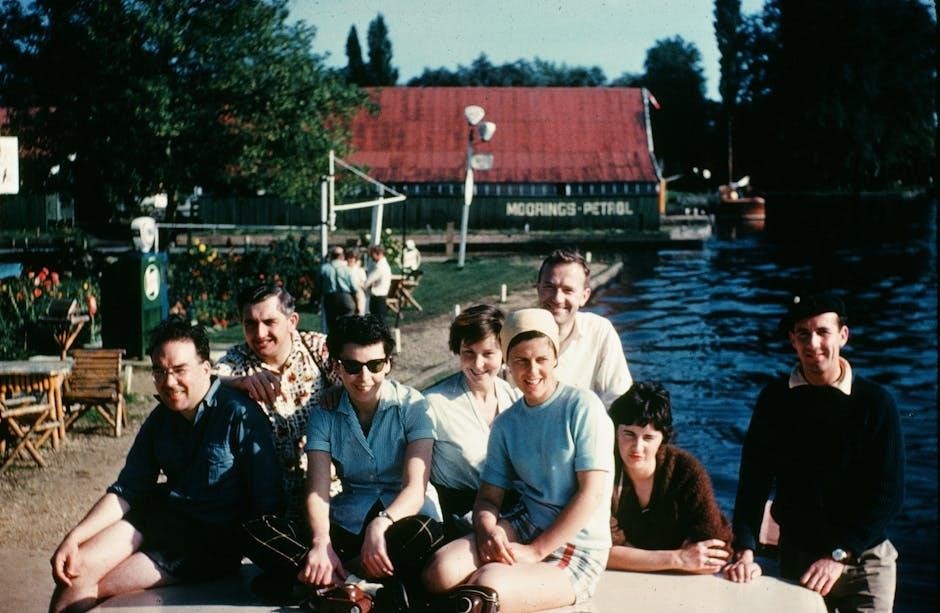
Historical Background of Yamaha Golf Carts in the 1980s
During the 1980s, Yamaha established itself as a prominent manufacturer of golf carts, introducing models like the Sun Classic, which gained popularity for their reliability and durability.
Development and Popularity of the Yamaha Sun Classic
The Yamaha Sun Classic golf cart emerged in the 1980s as a testament to Yamaha’s commitment to innovation and reliability. Designed with a focus on durability and performance, the Sun Classic quickly gained popularity among golf enthusiasts and course managers. Its development incorporated feedback from users, resulting in a model that balanced power, efficiency, and ease of use. The cart’s robust construction and versatile design made it suitable for both on-course and off-course applications. The Sun Classic’s popularity soared due to its fuel efficiency and low maintenance requirements, making it a preferred choice for many. Yamaha’s reputation for producing high-quality vehicles further cemented the Sun Classic’s status as a reliable workhorse in the golfing community. Its enduring popularity has made it a sought-after model for collectors and vintage golf cart enthusiasts today.
Key Features of the 1980s Yamaha Sun Classic Golf Cart
The 1980s Yamaha Sun Classic golf cart was renowned for its robust design and practical features. It featured a durable steel frame and a reliable 2-stroke or 4-stroke engine, depending on the model year, ensuring smooth operation on various terrains. The cart was equipped with a simple yet effective transmission system, providing ease of use. Its suspension system offered a comfortable ride, while the braking mechanism ensured safety. The Sun Classic also featured a spacious design, accommodating two passengers with ample storage for golf bags. The cart’s fuel efficiency and low maintenance requirements were significant advantages, making it a popular choice for both personal and commercial use. Additionally, Yamaha incorporated user-friendly controls and a compact design, enhancing maneuverability on golf courses. These features combined to make the Sun Classic a reliable and versatile option for golf enthusiasts during the 1980s.
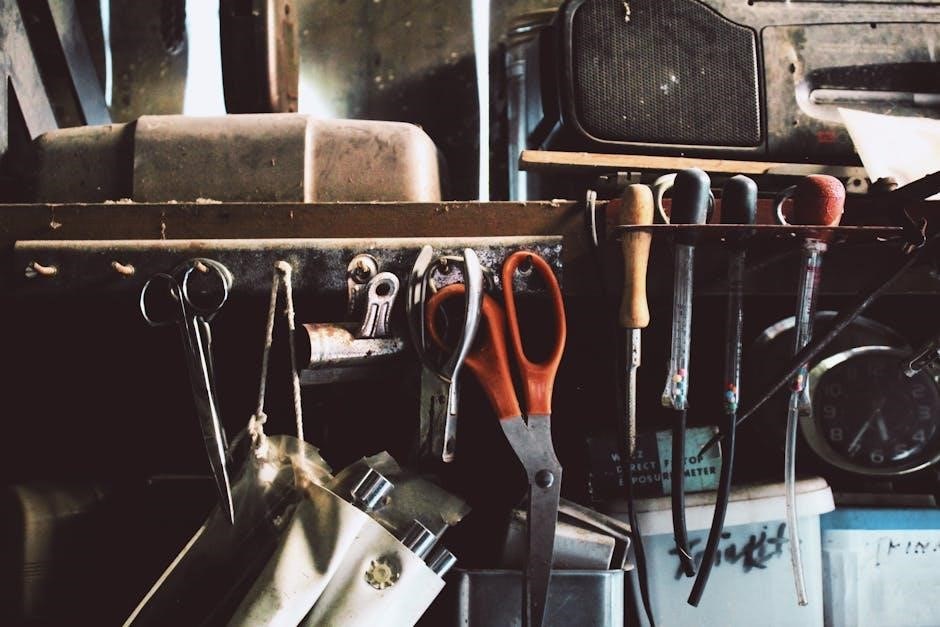
Types of Repairs Covered in the Manual
The manual covers electrical system diagnostics, mechanical component overhauls, fuel system maintenance, and transmission repairs. It provides step-by-step guidance for resolving common issues and ensuring optimal performance.
Electrical System Repairs
The manual provides detailed guidance for diagnosing and repairing electrical system issues in the 1980s Yamaha Sun Classic Golf Cart. It includes troubleshooting techniques for faulty wiring, battery charging systems, and ignition components. Step-by-step instructions are offered for replacing or upgrading electrical parts, ensuring optimal performance and safety. Diagrams and charts help users identify and resolve common electrical faults, such as blown fuses, malfunctioning solenoids, or corroded connections. Additionally, the manual covers the installation of aftermarket electrical accessories, like lights or USB ports, while maintaining the cart’s original functionality. By following the manual’s electrical repair section, owners can restore their vintage golf cart’s reliability and extend its lifespan. This section is particularly useful for enthusiasts seeking to preserve the cart’s authenticity while addressing modern electrical demands.
Mechanical Component Overhauls
The repair manual provides in-depth instructions for overhauling key mechanical components of the 1980s Yamaha Sun Classic Golf Cart. It covers engine rebuilding, including cylinder head repair and piston replacement, ensuring optimal performance. Detailed steps are outlined for servicing the transmission and differential, addressing common issues like gear wear and fluid leaks. Brake system overhauls are also covered, with guidance on replacing pads, rotors, and hydraulic lines. Additionally, the manual addresses suspension and steering repairs, helping to restore stability and maneuverability. Clear diagrams and step-by-step instructions make complex tasks manageable for both novice and experienced owners. By following these mechanical overhaul procedures, enthusiasts can extend the lifespan of their vintage cart and maintain its reliability for years to come. This section is invaluable for anyone aiming to restore their Yamaha Sun Classic to its original operational excellence.
Fuel System Maintenance and Repair
The repair manual for the 1980s Yamaha Sun Classic Golf Cart includes detailed guidance on fuel system maintenance and repair; It covers routine tasks such as cleaning or replacing the fuel filter and inspecting fuel lines for leaks or damage. Additionally, the manual provides steps for adjusting or replacing the carburetor, a critical component for proper fuel-air mixture. Troubleshooting sections help identify common issues like poor engine performance or difficulty starting, often linked to a faulty fuel pump or clogged components. Clear instructions are provided for draining and cleaning the fuel tank, as well as replacing worn-out gaskets and seals. By following these procedures, owners can ensure their cart runs efficiently and avoid costly repairs. The fuel system section is essential for maintaining the cart’s performance and longevity. Proper maintenance also helps prevent corrosion and contamination, ensuring reliable operation for years to come.
Transmission and Differential Repairs
The repair manual for the 1980s Yamaha Sun Classic Golf Cart thoroughly addresses transmission and differential repairs, crucial for smooth cart operation. Detailed instructions are provided for diagnosing and resolving common issues such as slipping gears, abnormal noises, or loss of power. Procedures include inspecting and replacing worn-out clutch components, adjusting gear linkages, and lubricating moving parts to prevent wear. The manual also covers differential maintenance, including fluid changes and seal replacements to prevent leakage. Step-by-step guidance is given for disassembling and reassembling components, ensuring precise alignment and functionality. By adhering to these repair protocols, owners can restore their cart’s drivetrain efficiency, enhancing both performance and durability. Regular maintenance of these systems is vital for preventing premature wear and ensuring reliable operation, making the manual an indispensable resource for every Yamaha Sun Classic owner. Proper care extends the lifespan of these critical components, keeping the cart running smoothly for years.

Diagnosis and Troubleshooting Techniques
The repair manual offers detailed troubleshooting guides to identify and resolve common issues in 1980s Yamaha Sun Classic Golf Carts, ensuring efficient repairs and optimal performance.
Using the Manual for Fault Diagnosis
The repair manual provides a systematic approach to diagnosing faults in 1980s Yamaha Sun Classic Golf Carts. It includes detailed troubleshooting guides, wiring diagrams, and symptom-based repair procedures. By following the manual, users can identify issues such as electrical malfunctions, mechanical failures, or fuel system problems. The step-by-step instructions enable even novice technicians to locate and address faults efficiently; Additionally, the manual emphasizes the importance of regular maintenance to prevent common issues from escalating. Whether it’s a faulty battery, a malfunctioning carburetor, or a problematic transmission, the manual offers clear directions for diagnosis and repair. This ensures that owners can keep their vintage golf carts in optimal condition, preserving their functionality and longevity. The manual’s diagnostic tools are indispensable for anyone aiming to maintain or restore these classic vehicles effectively.
Common Issues in 1980s Yamaha Sun Classic Golf Carts
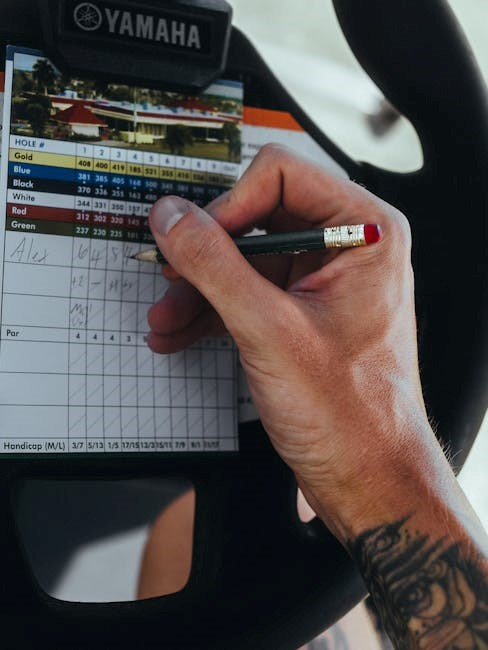
Owners of 1980s Yamaha Sun Classic Golf Carts often encounter specific issues due to the model’s age. Electrical system malfunctions, such as faulty wiring or corroded connections, are prevalent. The carburetor frequently requires adjustment or cleaning to ensure proper fuel flow. Additionally, the transmission and differential components may wear out over time, leading to operational difficulties. Brake systems can also degrade, necessitating replacement of worn pads or drums. Engine performance issues, like misfires or low power output, are common and often linked to outdated fuel systems. Regular maintenance, as outlined in repair manuals, can help mitigate these problems. Addressing these issues promptly ensures the cart remains functional and reliable. Understanding these common challenges allows owners to perform targeted repairs and maintain their vintage cart’s performance and longevity.

Maintenance and Routine Service Guidelines
Regular maintenance is crucial for preserving the functionality and longevity of 1980s Yamaha Sun Classic Golf Carts. Routine checks on brakes, batteries, and fuel systems ensure optimal performance and prevent potential issues.
Recommended Maintenance Schedule
A well-structured maintenance schedule is vital for ensuring the longevity and performance of a 1980s Yamaha Sun Classic Golf Cart. Owners should begin with monthly checks of the oil level, battery water levels, and tire pressure. Every three months, inspect the brakes, check for loose bolts, and clean the air filter. Annually, replace the spark plug, inspect the fuel lines for cracks, and lubricate moving parts. Additionally, every 500 hours of use, the cart should undergo a thorough service, including changing the oil and filter, inspecting the electrical system, and checking the condition of the suspension and steering components. Following this schedule ensures reliability and prevents costly repairs. Always refer to the repair manual for specific guidance tailored to your Yamaha Sun Classic model.
Winterizing Your Yamaha Sun Classic Golf Cart
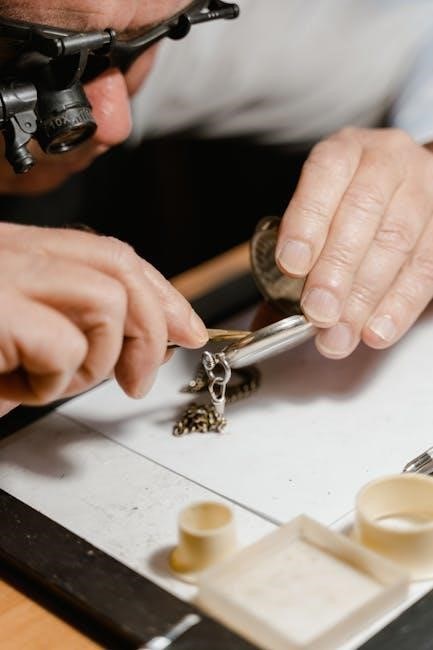
Winterizing your 1980s Yamaha Sun Classic Golf Cart is essential to protect it from cold weather damage and ensure it remains in good condition. Start by draining the fuel tank or stabilizing the fuel with a high-quality additive to prevent degradation. Disconnect and charge the battery, storing it in a warm, dry place. Inspect and drain the cooling system if applicable, and consider using antifreeze to protect against freezing temperatures. Lubricate all moving parts, including the suspension and steering components, to prevent rust and corrosion. Clean the cart thoroughly and apply a protective wax or sealant to the exterior surfaces. Store the cart in a dry, sheltered area, such as a garage or covered storage unit, and elevate it slightly to avoid tire flat spots. Regularly check on the cart during winter to ensure everything remains in order. Proper winterization ensures your Yamaha Sun Classic is ready for the next season.
Custom Modifications and Upgrades
Custom modifications and upgrades can enhance the performance, aesthetics, and functionality of your 1980s Yamaha Sun Classic Golf Cart. Owners often upgrade the engine for increased power, improve suspension systems for better handling, or add custom interiors and exteriors for a personalized look. Lighting upgrades, such as LED lights, can improve visibility and safety. Modern accessories like stereos, GPS, and storage solutions are also popular additions. When modifying, it’s crucial to consult repair manuals to ensure compatibility and avoid damaging the cart’s original systems. DIY enthusiasts often find creative ways to blend vintage charm with modern convenience, making their Yamaha Sun Classic truly unique. Always prioritize safety and functionality when implementing upgrades to maintain the cart’s reliability and performance.

Resources for Repair Manual Users
Online communities and forums dedicated to Yamaha Sun Classic Golf Carts offer valuable resources, including repair manual downloads, troubleshooting tips, and expert advice from experienced enthusiasts.
Online Communities and Forums for Yamaha Golf Cart Enthusiasts
Online communities and forums dedicated to Yamaha Sun Classic Golf Carts provide invaluable resources for enthusiasts and repair manual users. These platforms host discussions, troubleshooting tips, and shared knowledge from experienced owners and mechanics. Many forums offer access to downloadable repair manuals, wiring diagrams, and step-by-step guides tailored for 1980s models. Users can engage with experts, ask specific questions, and gain insights into common issues and solutions. Additionally, these communities often feature sections for buying and selling parts, making it easier to locate rare or discontinued components. The collaborative nature of these forums fosters a supportive environment for DIY repairs and restorations. By leveraging these resources, owners can ensure their vintage Yamaha Sun Classic Golf Carts remain in optimal condition while connecting with like-minded enthusiasts worldwide.
Authorized Dealers and Repair Shops
Authorized Yamaha dealers and specialized repair shops play a crucial role in maintaining and repairing 1980s Gas Yamaha Sun Classic Golf Carts. These establishments offer genuine parts, expert diagnostics, and professional service, ensuring repairs meet Yamaha’s standards. Certified technicians are trained to handle specific models, providing reliable solutions for electrical, mechanical, and fuel system issues. Many authorized dealers also offer maintenance schedules tailored to vintage models, helping owners preserve their cart’s performance and longevity. Additionally, these shops often have access to rare or discontinued parts, making them indispensable for restoring older models. By trusting authorized dealers, owners can ensure their Yamaha Sun Classic remains in optimal condition, adhering to the manufacturer’s guidelines. This level of service is especially valuable for vintage golf carts, where maintaining authenticity and functionality is paramount.
DIY Repair Communities and Workshops
DIY repair communities and workshops have become invaluable resources for enthusiasts working on 1980s Yamaha Sun Classic Golf Carts. These forums and groups provide a platform for sharing knowledge, troubleshooting tips, and repair experiences. Many members offer detailed guides, wiring diagrams, and tutorials tailored to vintage models. Workshops often host hands-on sessions, allowing participants to learn from experienced technicians and hobbyists. Additionally, these communities frequently discuss custom modifications and upgrades, blending modern innovations with classic designs. By fostering collaboration, DIY repair communities empower owners to tackle complex repairs confidently. While these resources are incredibly helpful, they should be used in conjunction with official repair manuals to ensure accuracy and safety. Overall, these networks have revolutionized how vintage golf cart owners maintain and restore their vehicles, keeping the Yamaha Sun Classic alive for future generations.
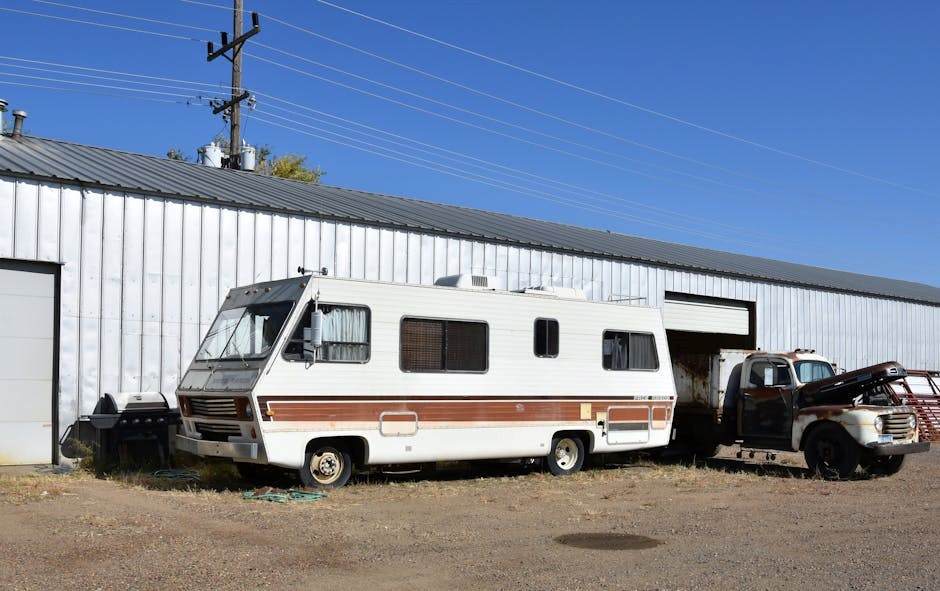
Safety Precautions and Best Practices
Always wear protective gear and ensure proper ventilation when working with fuel or electrical systems. Follow manual guidelines to ensure safe and effective repairs.
Safety Guidelines for Working on Vintage Golf Carts
When working on a 1980s Yamaha Sun Classic Golf Cart, prioritize safety to avoid accidents. Always wear protective gear, such as safety glasses and gloves, and ensure the cart is on a level surface. Disconnect the battery before starting any repairs to prevent electrical shocks. Use jack stands for lifting, and never rely solely on the cart’s suspension. Check for damaged wires and frayed connections in the electrical system, as vintage components can be prone to wear. Properly ventilate your workspace, especially when handling fuel or chemicals. Follow the repair manual’s guidelines for safe practices, and dispose of hazardous materials responsibly. Stay informed about potential risks associated with older models, such as outdated braking systems or corrosion issues. By adhering to these precautions, you can ensure a safe and successful repair process.
Essential Tools and Equipment for Repairs
When working on a 1980s Yamaha Sun Classic Golf Cart, having the right tools and equipment is crucial for effective repairs. A socket set, screwdrivers, and pliers are fundamental for mechanical tasks. A multimeter is essential for diagnosing electrical issues, while a wiring diagram provides clarity for complex circuits. For fuel system maintenance, a fuel pressure tester and carburetor cleaning kit are indispensable. Additionally, a hydraulic jack and jack stands are necessary for lifting the cart safely. Proper ventilation and protective gear, such as gloves and safety glasses, are must-haves to prevent accidents. A torque wrench ensures precise tightening of bolts and nuts, and a set of wrenches simplifies work on the transmission and differential; Lastly, a parts cleaner and lubricants help maintain the cart’s condition. These tools, combined with the repair manual, ensure a smooth and professional repair process.
Environmental Considerations for Repairs
When repairing a 1980s Yamaha Sun Classic Golf Cart, it’s important to consider environmental impact. Proper disposal of hazardous materials like batteries, oil, and fuel is crucial to prevent contamination. Always use eco-friendly cleaning products for parts and avoid draining fluids directly into the ground. Recycling old components, such as tires and metal parts, helps reduce waste. Energy-efficient practices, like using LED lighting for upgrades, can minimize long-term environmental strain. Additionally, adhering to local regulations ensures compliance with environmental standards. By adopting sustainable repair practices, owners can maintain their vintage cart while promoting eco-conscious maintenance. These considerations not only protect the environment but also align with modern sustainability goals, making vintage golf cart ownership more responsible and eco-friendly.
Repair manuals for 1980s Yamaha Sun Classic Golf Carts remain vital for preserving these vintage vehicles. Future innovations in digital tools and sustainable practices will enhance maintenance and longevity.
The Role of Repair Manuals in Preserving Vintage Golf Carts
Repair manuals play a crucial role in preserving vintage golf carts like the 1980s Yamaha Sun Classic. These manuals provide detailed instructions, diagrams, and specifications necessary for maintaining and restoring these classic vehicles. By adhering to the guidelines outlined in the manuals, owners can ensure that their golf carts retain their original functionality and aesthetic appeal. The step-by-step repair procedures help in identifying and addressing issues early, preventing further damage. Additionally, the manuals serve as a valuable resource for DIY enthusiasts and professionals alike, offering insights into the specific needs of vintage models. As these golf carts age, the reliance on accurate repair manuals becomes even more critical to maintain their performance and extend their lifespan. Thus, these manuals are indispensable for anyone committed to preserving the legacy of the Yamaha Sun Classic.
Modern Innovations in Golf Cart Repair and Maintenance
Modern innovations have revolutionized the repair and maintenance of golf carts, including the 1980s Yamaha Sun Classic. Digital repair manuals now offer interactive diagrams and videos, making complex procedures more accessible. Diagnostic tools, such as OBD-II scanners adapted for older models, help identify issues quickly. Advances in materials science have led to durable, lightweight replacement parts that enhance performance. Additionally, electric and hybrid upgrades are becoming popular, offering eco-friendly alternatives while maintaining classic aesthetics. Online forums and communities provide real-time support, connecting enthusiasts worldwide. These advancements ensure that vintage golf carts remain functional and relevant, blending traditional charm with contemporary convenience. As technology evolves, the ability to restore and modernize classic models like the Yamaha Sun Classic continues to improve, ensuring their longevity for future generations.